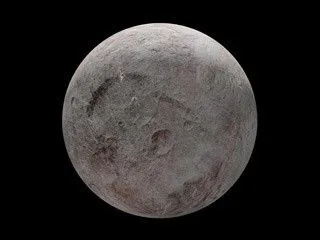Our Planets Found: Eris (Planet 9.5)
When found:
January 5, 2005.
By who:
Mike Brown, Chad Trujillo, and David Rabinowitz.
Description:
Eris is the most massive dwarf planet in the Solar System and the largest in the scattered disc beyond the Kuiper belt.
Discovered in 2005, it was initially hailed by NASA as potentially the tenth planet due to its size, which was thought to exceed Pluto's, sparking intense debate about planetary classification. This controversy led to the International Astronomical Union (IAU) defining "planet" in 2006, requiring orbital clearance, a criterion Eris fails as it shares its region with other trans-Neptunian objects. As a result, Eris was classified as a dwarf planet alongside Pluto and Ceres, effectively demoting Pluto in the process.
With a diameter of about 2,326 km, it has a rocky core, a mantle possibly containing a subsurface ocean sustained by tidal heating, and a uniform, white surface covered in methane and nitrogen ice, potentially featuring refreshed terrain from geological activity.
Distance from Earth:
Closest distance: approximately 3.57 billion miles.
Length of Year & Day:
Year: 205,044 Earth days (about 561 years).
Day: 379 hours.
Interesting fact:
Eris may maintain a subsurface ocean through tidal interactions with its moon Dysnomia and radioactive decay, suggesting ongoing geological activity and raising intriguing questions about habitability in the far reaches of the Solar System.
Like its Finder:
Like Mike Brown, the Caltech astronomer whose groundbreaking discoveries of distant objects reshaped planetary science and earned him the moniker "Pluto killer" for challenging established norms, Eris disrupts cosmic hierarchies from its remote orbit, embodying change and the relentless pursuit of hidden truths in the outer darkness.
